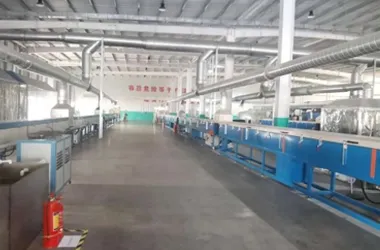How to Replace the Rubber Seal on Your Garage Door for Better Insulation
Replacing Garage Door Rubber Seal A Step-by-Step Guide
When it comes to home maintenance, one often overlooked component is the garage door rubber seal. This crucial element not only enhances the aesthetics of your garage but also plays a vital role in ensuring energy efficiency and protecting your garage from the elements. Over time, exposure to harsh weather, wear and tear, or damage from usage can lead to deterioration, making it necessary to replace the rubber seal. Here’s a step-by-step guide to help you through the process of replacing your garage door rubber seal.
Step 1 Identify the Right Seal
Before you begin replacing the rubber seal, it’s important to know what type of seal you need. Garage door seals come in various shapes and sizes bottom seals, side seals, and top seals. The most common type to replace is the bottom seal, which runs along the bottom of the door to prevent water, debris, and pests from entering the garage. Measure the length of the current seal carefully to ensure you order an appropriate replacement. You can find seals at home improvement stores or online.
Step 2 Gather Your Tools
To make the process smooth and efficient, gather the necessary tools beforehand. You will typically need a utility knife, a straight edge, a hammer, and possibly some adhesive for added security. Having these tools on hand will save you time during the replacement process.
Step 3 Remove the Old Seal
Start by lifting the garage door slightly to access the bottom seal. If the door is heavy, ensure it is secure to prevent it from falling. Use the utility knife to cut away any visible remnants of the old seal. Depending on the type of seal installed, it may be held in place by a metal retainer or simply inserted into a groove. If your seal is secured with a retainer, remove it by gently prying it away with a hammer or screwdriver.
Step 4 Clean the Area
replacing garage door rubber seal

After removing the old seal, take a moment to clean the area where the new seal will be installed. Remove any debris, dirt, or remnants of the old seal. A clean surface ensures better adhesion and provides a secure fit for the new seal.
Step 5 Install the New Rubber Seal
With the area cleaned, it’s time to install the new rubber seal. If your new seal requires a retainer, position it in place first. Then, insert the new seal into the groove or the retainer, ensuring it is aligned properly. If your seal comes in a roll, you may need to cut it to the appropriate length, ensuring that it fits snugly across the entire width of the door.
Step 6 Test the Fit
After installation, lower the garage door slowly to ensure that the new seal fits securely and effectively keeps out unwanted elements. Check for any gaps or areas where the seal might not be making contact with the ground. If you notice any issues, adjust the seal or make additional cuts as necessary to achieve a proper fit.
Step 7 Final Touches
Finally, inspect the new seal for any visible defects. If necessary, apply a small amount of adhesive to the ends of the seal for added stability. Regularly inspecting and maintaining your garage door seal will help prolong its lifespan and maintain the overall efficiency of your garage.
Conclusion
Replacing your garage door rubber seal may seem like a minor task, but it is an important maintenance step that can save you money on energy bills and protect your garage from damage. By following these simple steps, you can ensure your garage remains secure and well-insulated for years to come. Remember, a well-maintained home is a happy home!
-
Under Door Draught Stopper: Essential ProtectionNewsJul.31,2025
-
Garage Door Seal and Weatherstrips for ProtectionNewsJul.31,2025
-
Edge Banding Tape for Perfect EdgesNewsJul.31,2025
-
Table Corner Guards and Wall Corner ProtectorsNewsJul.31,2025
-
Stair Nose Edging Trim and Tile Stair SolutionsNewsJul.31,2025
-
Truck Bed Rubber Mats for Pickup BedsNewsJul.31,2025
-
Window Weather Stripping for Noise ReductionNewsJul.29,2025